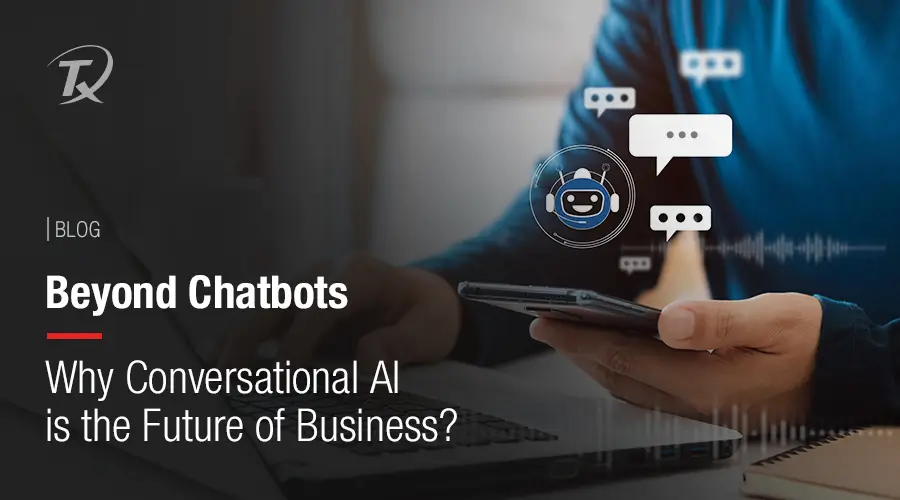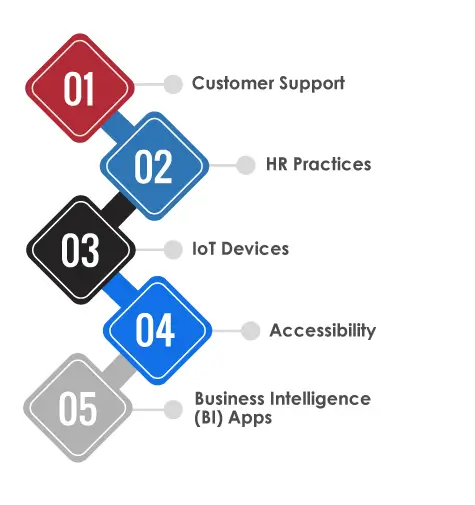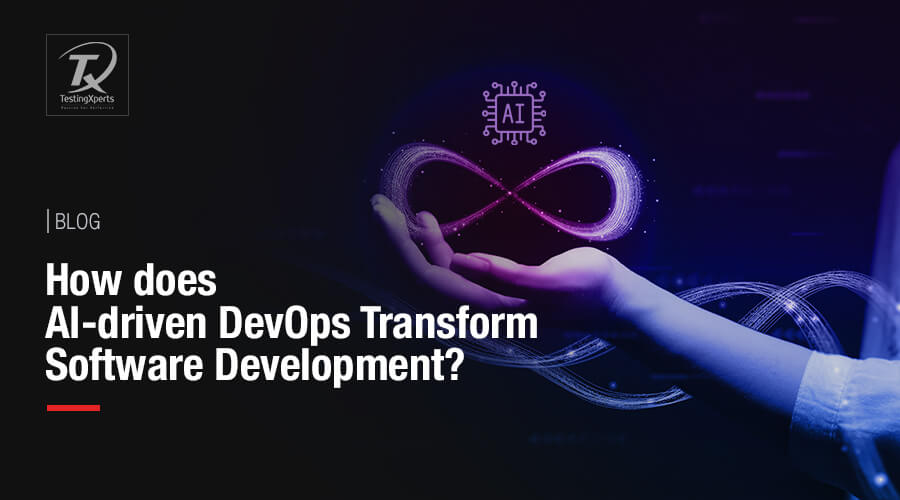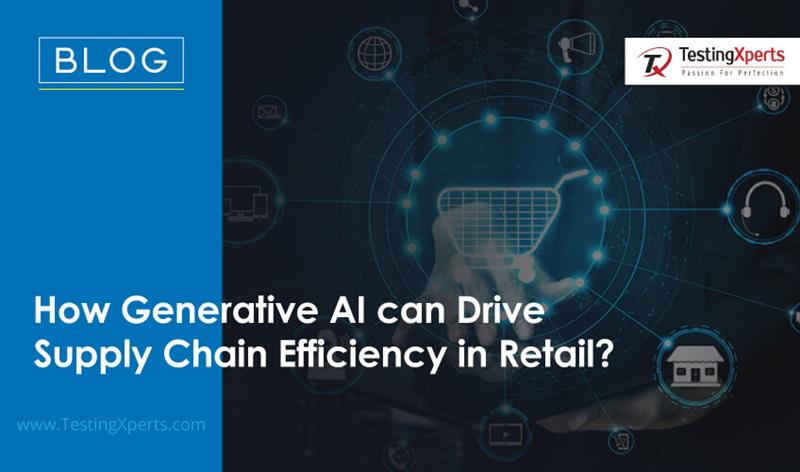
- What is Conversational AI?
- Key Elements Responsible for Conversational AI Working
- 5 Use Cases of Conversational AI
- Why Should Businesses Leverage Conversational AI Solutions?
- Examples of Conversational AI Models
- How can Tx Assist with Conversational AI Chatbot Development?
- Summary
Over the last decade, businesses have relied on conversational AI chatbots to offer seamless customer support experience while redefining the engagement processes. As technology takes control of the digital ecosystem, its use cases will impact our everyday lives even more. If we look at artificial intelligence technology alone, it has slowly become a crucial part of our daily chores, which is why businesses must harness its full potential for customer service. With each passing day, we are moving towards more human-like conversations with chatbots.
“We’ve wanted to have human-like conversations with these systems for a long time now, and we’ve thought we might be nearing it for the last 10 to 12 years. We really have finally turned that corner.” – Joe Bradley, Chief Scientist and a Senior VP of data science and ML at LivePerson.
What is Conversational AI?

Businesses should invest in this technology to optimize customer engagement, drive cost savings, and improve their work efficiency. Here’s why it’s a game changer in today’s digital ecosystem:
- It can handle user queries 24/7, reducing response time and improving customer satisfaction.
- Businesses can automate their customer support tasks and free human resources to focus on priority tasks that can improve productivity.
- Leveraging AI will give insights into user behavior, allowing businesses to enable tailored responses through their conversational AI solutions. This would result in a higher engagement rate and higher customer loyalty.
- Businesses will be able to reduce overhead costs as conversational AI handles high volumes of user queries without increasing headcount.
Key Elements Responsible for Conversational AI Working
Mimicking human interactions and communication with AI is a complex task to accomplish. Even a simple talk between two entities involves more than just a logical processing of words. One has to understand the balance between the conversation context, the understanding level of people involved, and the background, along with the verbal and physical cues. A conversational AI solution has to follow all these rules to interact better with users. The key elements supporting its working are:
Machine Learning (ML)
It is a set of algorithms, individual variables, and advanced datasets that companies use to continuously train and improve their conversational AI models. As the input evolves, the AI machine improves its pattern recognition and prediction abilities, improving the overall efficiency of a task.
Natural Language Processing (NLP)
In conversational AI, NLP analyzes human language by leveraging ML. If we talk about the evolution of NLP methodologies, it would be in this order:
NLP has four steps, which are broken down further below:

- Input Generation: Users inject input via an app or website in the form of text or voice.
- Input Analysis: For text-based input, conversational AI uses NLU (natural language understanding) to analyze and decipher its meaning and intention. For speech-based input, it uses ASR (automatic speech recognition) and NLU for analysis.
- Dialogue Management: Natural language generation (NLG) formulates the response in this stage. It is one of the components of NLP.
- Refinement: The ML algorithms will refine the outputs over time to ensure response effectiveness and accuracy.
- Deep Learning is a type of ML that trains computers to collect information from complex data sources. This facilitates the mathematization of words, assisting conversational AI models with mathematical learning. It is said that deep learning will take the NLP abilities of conversational AI to the next level.
5 Use Cases of Conversational AI

Customer Support
Chatbots are becoming primary tools for facilitating the customer journey on online platforms. They can answer FAQs around topics like shipping details, clothes size suggestions, personalized care services, and much more. It is changing the way businesses approach customer engagement across social media and websites.
HR Practices
Companies can leverage conversation AI to optimize various HR activities like onboarding process, employee details upload process, and employee training.
IoT Devices
Most of the houses have at least one IoT device (Alexa, smart lights, ACs, smartphones, etc.) these days. These devices have an inbuilt automated speed recognition system to interact with end users.
Accessibility
Organizations leverage chatbots to offer more accessible online experiences to users, especially those who utilize assistive technology. Text-to-speech dictation and language translations are commonly used functionalities of conversational AI.
Business Intelligence (BI) Apps
By combining conversational AI with the BI app’s data analytics capabilities, businesses can receive outputs in the form of data visualizations and explanations. A conversational BI app is integrated with a data warehouse/database to retrieve data for analysis and visualization.
Why Should Businesses Leverage Conversational AI Solutions?
Conversational AI is changing the way businesses engage with customers, making interactions more seamless, personalized, and efficient. From lead generation to post-sales support, AI-driven chatbots and virtual assistants are assisting enterprises to enhance customer experiences while optimizing operations. By leveraging natural language processing (NLP) and machine learning (ML), these solutions can interpret human speech, understand emotions, and respond intelligently, creating more meaningful engagements that drive business growth.
As customer expectations continue to rise, businesses must adopt innovative strategies to stay competitive. Conversational AI assists organizations in delivering real-time support, streamlining marketing and sales efforts, and refining targeting with personalized suggestions. By analyzing customer preferences and behavior, AI can enhance engagement with timely, relevant content that aligns with individual goals. Additionally, these solutions are scalable, allowing businesses to manage high volumes of interactions without affecting quality. With continuous advancements in AI, companies can unlock new opportunities to automate workflows, improve customer retention, and drive long-term success.
Examples of Conversational AI Models

ChatGPT
OpenAI ChatGPT is an AI chatbot that transforms text-based prompts and questions into well-defined answers. It was trained by leveraging data collected from human-based conversations and global data sources. It has been a true trailblazer in the world of conversational AI domain since its rollout.
Gemini
Although not as efficient as ChatGPT, it still has impressive features like processing images, video, audio, and code. It is an upgrade to Google’s Bard chatbot. Designed by DeepMind, this GenAI tool responds to prompts and queries using different formats.
Watson Assistant
IBM Watson runs on software called DeepQA and was fed an enormous amount of data from open-source projects and encyclopedias. Its product, Watson Assistant is a cloud-based chatbot that leverages NLU, NLP, and ML solutions to analyze queries and offer the best answers to satisfy end-user intent. Businesses can integrate it with CRM and back-end systems for operational improvement.
Alexa
Amazon Alexa is a household virtual assistant and is more than just a mere chatbot. It can talk back, know your name, control your smart devices, find the best dining place in the town, and much more. The level of personal experience it offers is all thanks to its NLU and speech recognition capabilities.
There are other examples like Samsung Bixby, Apple Siri, Google Assistant, Otter.ai, MS Bing Chat, etc.
How can Tx Assist with Conversational AI Chatbot Development?

Conversational AI and NLP facilitate the development of sophisticated virtual assistants and chatbots, allowing you to provide instant, automated support to customers. Tx offers NLP and conversational AI development services to help businesses design and implement AI-driven chatbots and virtual assistant systems. Our solutions are tailored to your specific business requirements:
- We extract valuable insights from text, helping businesses analyze large datasets, understand customer sentiments, and make informed decisions.
- We develop intelligent chatbots and virtual assistants that enable natural, context-aware interactions, improving customer support and engagement.
- Our solutions are tailored to industry-specific needs for maximum relevance and effectiveness and can handle growing interactions and operations while maintaining efficiency.
- We ensure secure, responsible implementation of NLP and Conversational AI.
Summary
Conversational AI is transforming how businesses interact with their customers, streamlining support, and enhancing engagement across industries. By leveraging NLP and machine learning, they can automate responses, provide personalized experiences, and operate efficiently at scale. From customer service and HR automation to IoT integration and business intelligence, AI-driven solutions improve accessibility and decision-making. Partnering with Tx will enable you to develop tailored chatbots and virtual assistants that align with industry-specific needs. With real-time insights and adaptive learning, these systems foster meaningful interactions while maintaining security and compliance. To know how we can help, contact our NLP and conversational AI experts now.
Discover more
Get in Touch
Stay Updated
Subscribe for more info




